23d Flying Training Squadron
| 23d Flying Training Squadron | |
|---|---|
|
Emblem of the 23d Flying Training Squadron | |
| Active | 1941–present |
| Country | United States |
| Branch | United States Air Force |
| Role | Flying Training |
| Decorations |
|
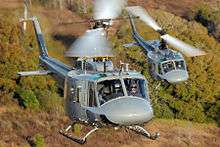
The 23d Flying Training Squadron is a unit of the United States Air Force, currently assigned to 58th Operations Group performing helicopter training at Fort Rucker, Alabama.
Mission
Since January 1994, the 23d Flying Training Squadron is the United States Air Force’s primary source of helicopter pilots for special operations, combat search and rescue, missile support, and distinguished visitor airlift missions. Its mission is providing Air Force helicopter flight training for all undergraduate pilots proceeding to flying careers in the Air Force’s UH-1N Huey, HH-60G Pave Hawk or CV-22 Osprey fleets. Tactical training includes alternate insertion and extraction (AIEs) but specialized training like hoists and gunnery is saved for type-qualification in post-graduate flight training at Kirtland AFB, New Mexico to smooth their transition in more complicated aircraft and missions. USAF rotary wing students receive their wings when their Fort Rucker pilot training class is completed.
History
World War II
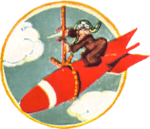
The 23d’s lineage goes back to the 76th Bombardment Squadron (Medium) which was designated on 20 November 1940 and activated on 15 January 1941. It was re-designated as the 23d Antisubmarine Squadron (Heavy) on 3 March 1943, and assigned to the 26th Antisubmarine Wing and moved to Imeson Field, Jacksonville, Florida with a variety of aircraft (B-25 Mitchell, Douglas O-43 and a Douglas B-18 Bolo). Coastal patrols were flown over the southeast coast looking for German U-Boats.
Deployed to Batista Field, Cuba on 28 February 1943, where it conducted operations until 24 April, then moved to Edinburgh Field, Trinidad on 5 August 1943 and was attached to Antilles Air Command. From Trinidad, was moved to Zandrey Field, Surinam between 15 August 1943 and December. The unit also had elements at NAS Guantanamo Bay, Cuba, and rotated its crews to and from Florida to its far-flung operating elements about every 10 weeks. One flight of the squadron was temporarily stationed at Caracas Airport, Venezuela. With the Navy taking over the antisubmarine mission in mid-1943, the squadron returned to the United States via Borinquen Field, Puerto Rico, where unit personnel were reassigned to other units. It was disbanded on 6 February 1944.
The unit designation was reconstituted as the 23d Troop Carrier Squadron on 11 November 1944 at Baer Field, Indiana and equipped with C-47 Skytrains. Assigned to the 349th Troop Carrier Group, IX Troop Carrier Command in England, being assigned to RAF Barkston Heath, the unit transported cargo and personnel throughout the European Theater of Operation (ETO). Later operated from Advanced Landing Grounds (ALGs) in France, primarily resupply and casualty evacuation airfields, many times unsurfaced close to the front lines. Was upgraded to the C-46 Commando in early 1945. Inactivated on 7 September 1946 after serving with the United States Air Forces in Europe (USAFE) as an intra-theater transport squadron supporting the occupation forces in Germany.
Cold War
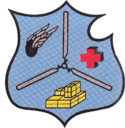
The activation of the 23d Helicopter Squadron on 9 July 1956, was the result of the inactivation of the 516th Troop Carrier Group (Assault, Rotary Wing). The 516th had been a victim of an Air Force and Army dispute over control of assault helicopters. The "20" series Helicopter Squadrons were activated at Sewart AFB, Tennessee on 9 July 1956, assigned to 18th Air Force and attached to the 314th Troop Carrier Wing. The Squadrons were formed by absorbing the personnel, aircraft, and equipment of the 345th Troop Carrier Squadron (Assault, Rotary Wing).
Assigned to Phalsbourg-Bourscheid Air Base France, the squadron arrived at the new base between 7 and 15 November 1956, equipped with Piasecki H-21 Shawnee helicopters. Built for a tactical fighter wing, Phalsbourg AB had plenty of hangar space and quarters for the 23d Squadron. It could keep all its H-21Bs indoors.
The 23d Helicopter Squadron provided very useful general airlift support throughout France. Standard helicopter missions included: Special Air Lift Mission (SAM), Administrative Support Mission (DC), and Emergency Air Evacuation Mission (EAE). The H-21 was ideal for transferring injured U.S. personnel and dependents that required major medical attention to full-service hospitals from remote military sites across Europe. It was assigned to the 322d Air Division at Évreux-Fauville Air Base, France for operational control, mission scheduling, and airlift priorities. The 322d recommended that the 23d Helicopter Squadron be divided into four detachments for greater utilization.
- Detachments #1 and #4 remained at Phalsbourg with ten aircraft. Major maintenance was performed by teams dispatched from Phalsbourg, and all H-21B-peculiar spare parts were stocked at Phalsbourg.
- Detachment #2 flew four H-21s to RAF Wethersfield, England. These four H-21Bs were equipped with air-sea hoist provisions for rescue flights.
- Detachment #3 relocated four H-21s to Wheelus AB, Libya in December 1956 to support gunnery range operations at El Uotia and Tarhuna, and to assist the TM-61 Matador missile launches and flight test programs.
After a year of operation, HQ USAFE felt the limitations of helicopter airlift were not worth the costs, and decided to eliminate the 23d Helicopter Squadron from its force structure after fourteen months in Europe. Also during this same time, the United States Army in France was obtaining similar helicopter airlift capabilities, and the mission of the 23d could be transferred to USAREUR.
The squadron was inactivated on 8 January 1958, as part of USAF-wide reductions due to DOD budget cuts. However, the Detachment at Wheelus was so successful that after the 23d departed France, six of their H-21Bs continued to operate, as part of the 7272d Flying Training Wing. During 1960 the Wheelus helicopters participated in an ongoing long distance rescue mission when they evacuated American and European civilians from the Congo where they were being threatened by rioting native troops.
23d Tactical Air Support Squadron
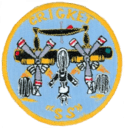
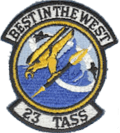

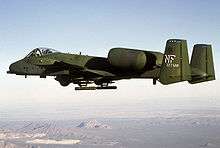
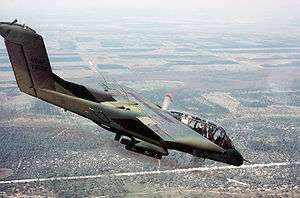
It was reconstituted and reactivated 8 April 1966 at Udon RTAFB, Thailand, and operated from Nakhon Phanom Royal Thai Air Force Base, Thailand, from 15 April 1966 – 22 September 1975.[1]
The 23d Tactical Air Support Squadron was created out of Det 3 of the 505th Tactical Control Group on 15 April 1966 by Lt. Col. (selectee) Robert L. Johnston. Lt. Col Johnston selected Nakhon Phanom Royal Thai Air Force Base (NKP) for operations in the Steel Tiger portion of the Ho Chi Minh Trail between Nape Pass and Tchepone in the Lao Panhandle. (Officially, the squadron was headquartered at Udorn Royal Thai Air Force Base, but only personnel and pay records were handled there.) It was the first USAF combat squadron to be stationed at NKP to operate across the Mekong over Laos. Its operations would be countered by a North Vietnamese increase in number, type, and caliber of antiaircraft weaponry. By 1972, the Trail would be defended by guns ranging from heavy machine guns to 100mm cannon, and both truck-borne and man-portable surface to air missiles.[2][3][4]
Five FAC's went to NKP in January to test the idea of working the Steel Tiger portion of the Ho Chi Minh Trail, and many more came there TDY during the following months. Losses of 23d TASS pilots started in March with Capt. Karl Edward Worst, whose plane disappeared 2 March 1966 in an apparent mid-air collision with an F-105 during an air strike.
The unit was initially called Operation Cricket, which name the area airborne control ship took for a call sign, and the original pilot call sign was "Gombey". This was changed to "Nail" in mid-1966, and "Nail" remained a call sign until war's end. The 23d also used the call sign "Rustic". The 23d's well-known unit patch featuring Jiminy Cricket with a walkie-talkie and an umbrella was sold to the squadron by Walt Disney for $1 in response to a request from Nail pilot John Taylor.[2]
The 23d TASS, like its sister FAC squadrons based in Vietnam, initially flew Cessna O-1 Bird Dogs in 1966 and into 1968, when the last one was retired. All of its O-1's were the F variant, which featured a variable-pitch propeller. In 1967, the unit began receiving O-2 Skymasters to replace the O-1s. In 1969, the squadron began to receive OV-10 Broncos, and flew that aircraft until the end of the war. Over the course of the war, the 23d TASS lost 7 O-1s, 15 O-2s, and 23 OV10s.[5]
The 23d TASS lost at least 27 pilots during the war, and its pilots received many Air Force combat decorations.[6] Among those decorations is the Air Force Cross awarded to Capt. Philip V. Maywald for extraordinary heroism during a rescue mission over Laos on 21 May 1968. The text of his citation reads:
The President of the United States of America, authorized by Title 10, Section 8742, United States Code, takes pleasure in presenting the Air Force Cross to Captain Philip V. Maywald (AFSN: 0-70153), United States Air Force, for extraordinary heroism in military operations against an opposing armed force while serving as an O-2A Pilot with the 23d Tactical Air Support Squadron, 56th Air Commando Wing, in action in Southeast Asia on 21 May 1968. On that date, Captain Maywald braved an intense and deadly barrage of hostile gunfire for over two hours while he controlled the successful rescue of a fellow pilot who had been downed by anti-aircraft fire deep within hostile territory. Despite the great personal risk involved to his own life, Captain Maywald, with undaunted determination, indomitable courage, and professional skill, repeatedly made low passes over the rescue scene in his light unarmored observation aircraft. At times, he flew within fifty feet of the hostile forces to determine their positions and to deliberately draw their fire on his aircraft. Due to his courage, persistence, and professional skill the downed pilot was safely recovered. Through his extraordinary heroism, superb airmanship, and aggressiveness, Captain Maywald reflected the highest credit upon himself and the United States Air Force.[7]
On 12 April 1975 the 23 TASS supported Operation Eagle Pull, the evacuation of Phnom Penh, Cambodia.[8]
The 23 TASS was inactivated on 22 September 1975, but reactivated on 30 November 1975 at as part of the 602nd Tactical Air Control Wing at Bergstrom Air Force Base, Texas, where it trained OV-10 forward air controllers before moving to Davis-Monthan Air Force Base, Arizona on 1 July 1980. The 27th TASS an O-2A sister squadron was at Davis-Monthan Air Force Base from 1977 to 1980. The 27th TASS was inactivated when the 23rd TASS arrived at Davis-Monthan and the unit was known as the 23rd TASS until it was again inactivated on 1 November 1991.[9] The 23 TASS operated 26 OA-37B's.
Helicopter Pilot Training Squadron
Redesignated as the 23d Flying Training Flight on 22 December 1993, it was reactivated on 15 January 1994 at Fort Rucker AIN, Alabama.
Reassigned to the 58th Operations Group on 1 April 1994, it was redesignated as the 23d Flying Training Squadron on 21 December 1999. At Fort Rucker, it is housed in three geographically-separated facilities and a simulator facility off-base, the 23d handles academic, simulator, and flight line training.
The C-12 Huron was added to the 23d FTS's aircraft inventory in 2000. In addition to the helicopter pilot training, the 23d FTS, with Det 5, Air Mobility Command Air Operations Squadron (AMCAOS)/Army, oversees the formal training for the Air Force's C-12 C/D Super King Air 200. Det 5 conducts all USAF C-12 flight evaluations, and also assists HQ DIA/Air Operations in world-wide flight evaluations upon request. Det 5, in association with HQ AMC/DOT develops, publishes, and implements curriculum for several courses, including academics, simulator training, flight training for Air Force C-12 initial qualification and initial instructor qualification.
Operations and Decorations
- Combat Operations. Antisubmarine patrols off the U.S. coast, Dec 1941 – Dec 1943. Transported personnel and cargo in Europe, 1944–1945. Reconnaissance and forward air control over the Ho Chi Minh Trail in Southeast Asia, Apr 1966 – Jan 1973. Tactical air control for the evacuation of Phnom Penh, Cambodia and the SS Mayaguez Incident, Apr and May 1975.
- Campaigns. World War II: Antisubmarine, American Theater. Vietnam: Vietnam Air; Vietnam Air Offensive; Vietnam Air Offensive, Phase II; Vietnam Air Offensive, Phase III; Vietnam Air Offensive, Phase IV; TET 69/Counteroffensive; Vietnam Summer-Fall 1969; Vietnam Winter-Spring, 1970; Sanctuary Counteroffensive; Southwest Monsoon; Commando Hunt V; Commando Hunt VI; Commando Hunt VII; Vietnam Ceasefire. Southwest Asia: Defense of Saudi Arabia; Liberation and Defense of Kuwait.
- Decorations. Presidential Unit Citations (Southeast Asia): 15 Apr-30 Sep 1966; 1 Aug 1968 – 31 Aug 1969; 1 Nov 1968 – 1 May 1969; 1 Jan-31 Dec 1970; 30 Jan-31 Dec 1971; 1 Apr 1972 – 22 Feb 1973. Air Force Outstanding Unit Awards with Combat "V": 1 Nov 1969 – 31 May 1970; 23 Feb 1973 – 28 Feb 1974; 24 Jan-2 May 1975. Air Force Outstanding Unit Awards: 1 Jul 1978 – 30 Jun 1979; 1 May 1984 – 30 Apr 1986; [15 Jan 1994]-30 Jun 1994; 1 Jul 1994 – 31 Dec 1995; 1 Jul 1996 – 30 Jun 1998; 1 Jul 1998 – 30 Jun 2000; 1 Jul 2001 – 30 Jun 2002; 1 Jul 2002 – 30 Jun 2003; 1 Jul 2003 – 30 Jun 2004; 1 Jul 2004 – 30 Jun 2005; 1 Jul 2006 – 30 Jun 2007; 1 Jul 2007 – 30 Jun 2008. Republic of Vietnam Gallantry Cross with Palm: [15] Apr 1966-28 Jan 1973; 8 Feb −31 Mar 1971; 1 Apr 1971 – 9 Mar 1972.
Lineage
23d Antisubmarine Squadron
- Constituted as the 76th Bombardment Squadron (Medium) on 20 November 1940
- Activated on 15 January 1941
- Redesignated: 23d Antisubmarine Squadron (Heavy) on 3 March 1943
- Disbanded on 6 February 1944[10]
- Reconstituted on 19 September 1985 and consolidated with the 23d Troop Carrier Squadron, the 23d Helicopter Squadron and the 23d Tactical Air Support Squadron as the 23d Tactical Air Support Squadron[11]
23d Troop Carrier Squadron
- Constituted as the 23d Troop Carrier Squadron on 11 November 1944
- Activated on 1 December 1944
- Inactivated on 7 September 1946[12]
- Consolidated on 19 September 1985 with the 23d Antisubmarine Squadron, the 23d Helicopter Squadron and the 23d Tactical Air Support Squadron as the 23d Tactical Air Support Squadron[11]
23d Helicopter Squadron
- Constituted as the 23d Helicopter Squadron on 24 February 1956
- Activated on 9 July 1956
- Inactivated on 8 January 1958
- Consolidated on 19 September 1985 with the 23d Antisubmarine Squadron, the 23d Troop Carrier Squadron and the 23d Tactical Air Support Squadron as the 23d Tactical Air Support Squadron[11]
23d Flying Training Squadron
- Constituted as the 23d Tactical Air Support Squadron on 8 April 1966
- Activated on 15 April 1966
- Inactivated on 22 September 1975
- Activated on 30 November 1975
- Consolidated on 19 September 1985 with the 23d Antisubmarine Squadron, the 23d Troop Carrier Squadron and the 23d Helicopter Squadron[11]
- Inactivated on 1 November 1991
- Redesignated 23d Flying Training Flight and activated on 15 January 1994
- Redesignated 23d Flying Training Squadron on 21 December 1999
Assignments
|
|
Stations
|
|
Aircraft
References
- ↑ "Factsheet 23rd Flying Training Squadron". Air Education and Training Command Public Affairs. September 16, 2010. Archived from the original on 4 April 2013. Retrieved August 30, 2015.
- 1 2 http://www.squawk-flash.org/23d_tass/23d_tass.htm
- ↑ Factsheets : FAC in SEA: The "Other War" - "Out-of-Country" Archived 28 August 2009 at the Wayback Machine.
- ↑ Churchill, Jan (1997). Hit My Smoke!: Forward Air Controllers in Southeast Asia. Sunflower University Press, p. 70. ISBNs 0-89745-215-1, 978-0-89745-215-1.
- ↑ Hobson 2001, p. 253.
- ↑ FAC Memorials - "All Gave Some, But Some Gave All"
- ↑ http://militarytimes.com/citations-medals-awards/recipient.php?recipientid=3614
- ↑ Dunham, George R (1990). U.S. Marines in Vietnam: The Bitter End, 1973–1975 (Marine Corps Vietnam Operational Historical Series). Marine Corps Association. p. 122. ISBN 978-0-16-026455-9.
- ↑ Richard Barrett, Lt Col, USAF Retired, assigned to 27th and 23rd TASS November 1977 to February 1983
- ↑ Maurer, Maurer, ed. (1982) [1969]. Combat Squadrons of the Air Force, World War II (PDF) (reprint ed.). Washington, DC: Office of Air Force History. pp. 120–121. ISBN 0-405-12194-6. LCCN 70605402. OCLC 72556.
- 1 2 3 4 Department of the Air Force/MPM Letter 662q, 19 September 85, Subject: Reconstitution, Redesignation, and Consolidation of Selected Air Force Tactical Squadrons
- ↑ Maurer, Combat Squadrons, pp. 124-125
![]() This article incorporates public domain material from the Air Force Historical Research Agency website http://www.afhra.af.mil/.
This article incorporates public domain material from the Air Force Historical Research Agency website http://www.afhra.af.mil/.
Additional reading
- Jimmie Butler (2011). A Certain Brotherhood. Amazon Digital Services, Inc. ASIN B004JHZ42Y. (Butler is a former 23d TASS FAC pilot.)
- Diller, Richard (2013). Firefly: A Skyraider's Story about America's Secret War Over Laos. Dogear Publishing. ISBNs 1-45751-969-0, 978-145751-969-7.
- Lerner, Joe (2006). In the Black. iUniverse. ISBNs 0-59540-714-5, 978-0-595-40714-9.
- Maurer, Maurer, ed. (1982) [1969]. Combat Squadrons of the Air Force, World War II (PDF) (reprint ed.). Washington, DC: Office of Air Force History. ISBN 0-405-12194-6. LCCN 70605402. OCLC 72556.
- Polifka, Karl (2013). Meeting Steve Canyon: ...and Flying with the CIA in Laos. CreateSpace. ISBNs 1-49097-985-9, 978-1-49097-985-4.
- Webb, Billy G. (2010). Secret War. XLibris. ISBNs 1-45356-485-3, 978-1-45356-485-1.
- Whitcomb, Darrel (1999) The Rescue of Bat 21, a factual account of Lt.Col. Iceal Hambleton's rescue from behind enemy lines, the longest, most complex, and costliest search and rescue operation of the Vietnam War. (Whitcomb is a former 23d TASS FAC pilot.)
External links
- http://www.squawk-flash.org/23d_tass/23d_tass.htm[]
- http://www.fac-assoc.org/23%20TASS/TheOriginsofthe23dTASS.htm[]
- http://aircommandoman.tripod.com Nakhon Phanom During The Secret
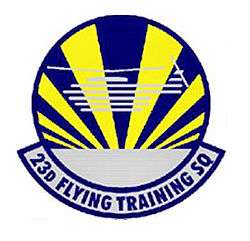
.jpg)
